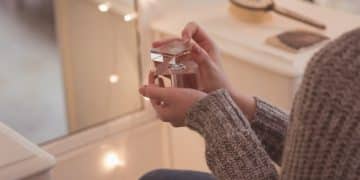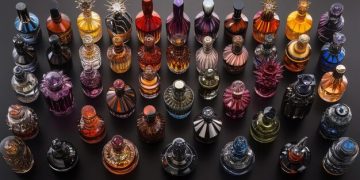Fragrance Review: Unveiling Scents, Stories, and Sensations
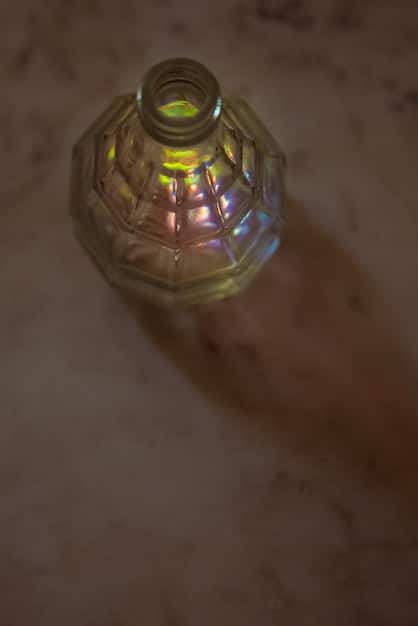
A fragrance review delves into the multifaceted world of perfume, exploring its composition, longevity, sillage, and the emotions it evokes, providing potential wearers with valuable insights before making a purchase.
Embark on an olfactory journey with our comprehensive fragrance review. We explore the artistry and science behind perfumes, offering insights to guide you in finding your signature scent. Discover notes, compositions, and the stories each fragrance tells.
The Art and Science of Fragrance Review
The process of a fragrance review is a blend of subjective experience and objective analysis. It’s about more than just saying whether you like a scent or not; it’s about dissecting the complex layers that make up a perfume and understanding how they interact with your personal chemistry.
Exploring the history, art, and fundamental science behind a fragrance unveils rich stories and the innovative spirit that shapes creations. It’s important to examine ingredients, techniques, and influence of culture and society on trends within this fragrant art form.
Understanding Fragrance Families
One of the first steps in crafting a fragrance review is identifying the fragrance family to which a perfume belongs. This provides a framework for understanding the scent profile.
- Floral: Dominated by floral notes like rose, jasmine, or lily.
- Oriental: Warm and spicy, often with amber, vanilla, and resins.
- Woody: Earthy and grounding, featuring notes like sandalwood, cedarwood, and vetiver.
- Fresh: Clean and invigorating, with citrus, aquatic, or green notes.
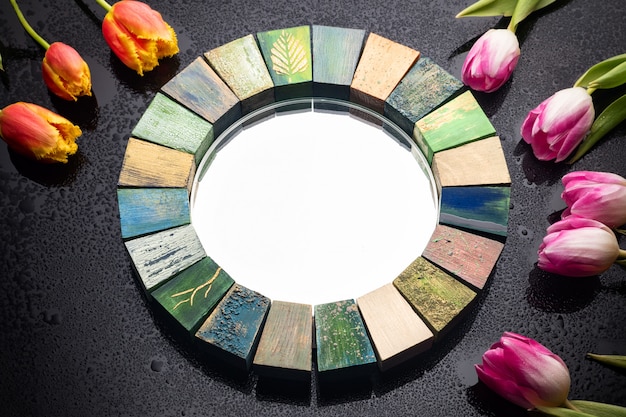
These classifications not only organize elements, but also create deeper insight into the fragrance’s character. Such analysis helps in effective review creation and comparison of different products based on their place within these families.
Deciphering Fragrance Notes
Fragrance notes represent a pyramid of scents that emerge over time after application. The notes provide richness and depth.
Top notes are the initial scents, heart notes emerge after the top notes fade, and base notes give the fragrance its longevity. A fragrance review should detail these layers.
The Fragrance Pyramid Explained
Understanding the fragrance pyramid is crucial for both perfumers and fragrance reviewers. Each layer plays a distinct role in the overall scent experience.
- Top Notes: These are the first scents you perceive, often light and volatile. Common top notes include citrus, herbs, and fruits.
- Heart Notes: Also known as middle notes, these form the core of the fragrance and emerge as the top notes fade. Floral and spicy notes are frequently found here.
- Base Notes: These are the foundation of the fragrance, providing depth and longevity. Woody, amber, and musk notes are typical base notes.
By identifying and describing each layer within a fragrance, reviewers offer a comprehensive view of its progression and overall essence. This creates better informed decisions for potential customers by mapping their experience through time accurately.
Analyzing Longevity and Sillage
Longevity refers to the duration a fragrance lasts on the skin, while sillage describes the trail of scent it leaves behind. These are key factors in evaluating a fragrance’s performance. This can vary based on skin type and environmental conditions.
The longevity of a fragrance can range from a few hours to an entire day. Sillage can be intimate, moderate, or strong, depending on the concentration and composition of the perfume.
Factors Affecting Performance
Several factors influence how long a fragrance lasts and how far it projects. Understanding these variables can help consumers make informed decisions.
- Skin Type: Oily skin tends to hold fragrance longer than dry skin.
- Concentration: Perfumes with higher concentrations of fragrance oils, such as parfum or eau de parfum, typically last longer than eau de toilette or eau de cologne.
- Environmental Conditions: Heat and humidity can intensify a fragrance’s projection but may also shorten its lifespan.
- Application: Applying fragrance to pulse points, such as the wrists and neck, can enhance its longevity due to the warmth of these areas.
With a keen eye on these aspects, a detailed review paints an accurate picture that helps others gauge whether it aligns with their preferences before purchasing. This type of analysis assists in managing expectations regarding performance related metrics like fade time and intensity of scent projection.
Subjectivity vs. Objectivity in Fragrance Review
A great fragrance review needs to find a balance between personal opinions and neutral observations. It’s crucial to acknowledge that scent perception is highly individual and influenceed by memories.
While personal anecdotes can add depth, reviewers should also provide clear descriptions of the scent, its composition, and its performance. This gives a well-rounded perspective that caters to diverse audiences.
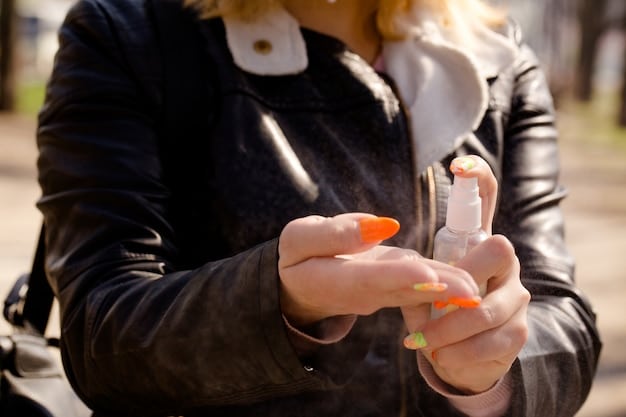
Navigating Personal Bias
Addressing personal bias is paramount for maintaining credibility and reliability in fragrance assessments. Honest and reflective self-assessment is therefore crucial .
- Acknowledge Personal Preferences: Be open about your favorite scent families or notes, and how they might influence your perception.
- Seek Diverse Opinions: Consult with other fragrance enthusiasts to gain different perspectives and challenge your own biases.
- Blind Testing: Conduct blind tests where you don’t know the brand or name of the fragrance to minimize preconceived notions.
Through these strategies, fragrance reviewers can present comprehensive analyses, enriching the reading experience and increasing their trustworthiness by ensuring objective perspectives prevail.
The Language of Scent: Describing the Intangible
Effectively conveying scent requires a rich vocabulary and creative expression. It’s about translating an emotional experience into words so that others can imagine the fragrance.
Words like “bright,” “warm,” “spicy,” “woody,” or “powdery” are common descriptors, but reviewers should also use evocative language to capture the mood and character of the fragrance. Similes and metaphors can also enhance the description.
Expanding Your Olfactory Vocabulary
Enriching the olfactory vocabulary is essential for reviewers looking to articulate the complexities within each composition.
Here are ways to enhance descriptive abilities:
- Study Perfume Dictionaries: Consult specialized dictionaries that list various fragrance notes and accords, along with their corresponding descriptors.
- Explore Related Fields: Draw inspiration from wine tasting, culinary arts, and even music to find new ways to describe scent profiles.
- Practice Sensory Awareness: Dedicate time to actively smelling different items, from everyday objects to complex perfumes, and try to articulate what you perceive.
These efforts enable reviewers to offer intricate and nuanced descriptions that engage their readers effectively. By expanding their vocabulary, reviewers ensure they can accurately capture the unique qualities and emotional impact of each fragrance.
Ethical Considerations in Fragrance Review
Transparency and honesty are essential in fragrance review. Disclose any potential conflicts of interest, such as receiving free products or being sponsored by a brand.
Respect intellectual property by not copying reviews from others and giving credit where it’s due. A fragrance review provides the reader with an honest and unbiased portrayal.
Best Practices for Transparency
Upholding transparency is key to building trust and maintaining credibility within the fragrance community.
Some best practices include:
- Full Disclosure of Affiliations: Always clearly state if you have received a product for free, are participating in an affiliate program, or have any other relationship with the brand.
- Avoid Exaggerated Claims: Refrain from making overly enthusiastic or negative statements that could mislead readers.
- Independent Testing: Ensure that reviews are based on your own experiences and observations, without influence from outside sources.
By following these guidelines, reviewers can ensure their content is both reliable and valuable. Transparency builds long lasting relationships, reinforcing the perception of trustworthiness within the online fragrance community and among broader audiences.
| Key Aspect | Brief Description |
|---|---|
| 👃 Scent Profile | Details top, heart, and base notes for a complete scent experience. |
| ⏱️ Longevity | How long the fragrance lasts on the skin after application. |
| 🌬️ Sillage | The trail of scent left behind by the wearer, ranging from intimate to strong. |
| 🧪 Composition | Breakdown of ingredients and construction, affecting scent character and performance. |
Frequently Asked Questions
▼
A good fragrance review combines objective descriptions with subjective experiences, offering insights into scent notes, longevity, sillage, and overall impressions. Its about being transparent about biases and experiences.
▼
Use descriptive terms that capture the scent’s essence, such as “woody,” “floral,” “spicy,” or “citrusy.” Compare it to familiar scents or experiences, and express the emotions or memories it evokes. Descriptors work great.
▼
Longevity refers to how long a fragrance lasts on your skin, while sillage is the trail of scent it leaves behind as you move. Both are important factors in assessing duration and radius.
▼
Individual body chemistry, skin type, and even diet can influence how a fragrance interacts with your skin, altering its scent profile. These variations need careful examination.
▼
Experiment with different fragrance families to discover your preferences. Consider your lifestyle, personality, and the emotions you want to evoke. Sample scents in different environments.
Conclusion
Crafting a compelling fragrance review involves a delicate balance of objective analysis and subjective expression. By understanding the art and science behind scent, reviewers can provide valuable insights that guide consumers toward finding their perfect perfume.



